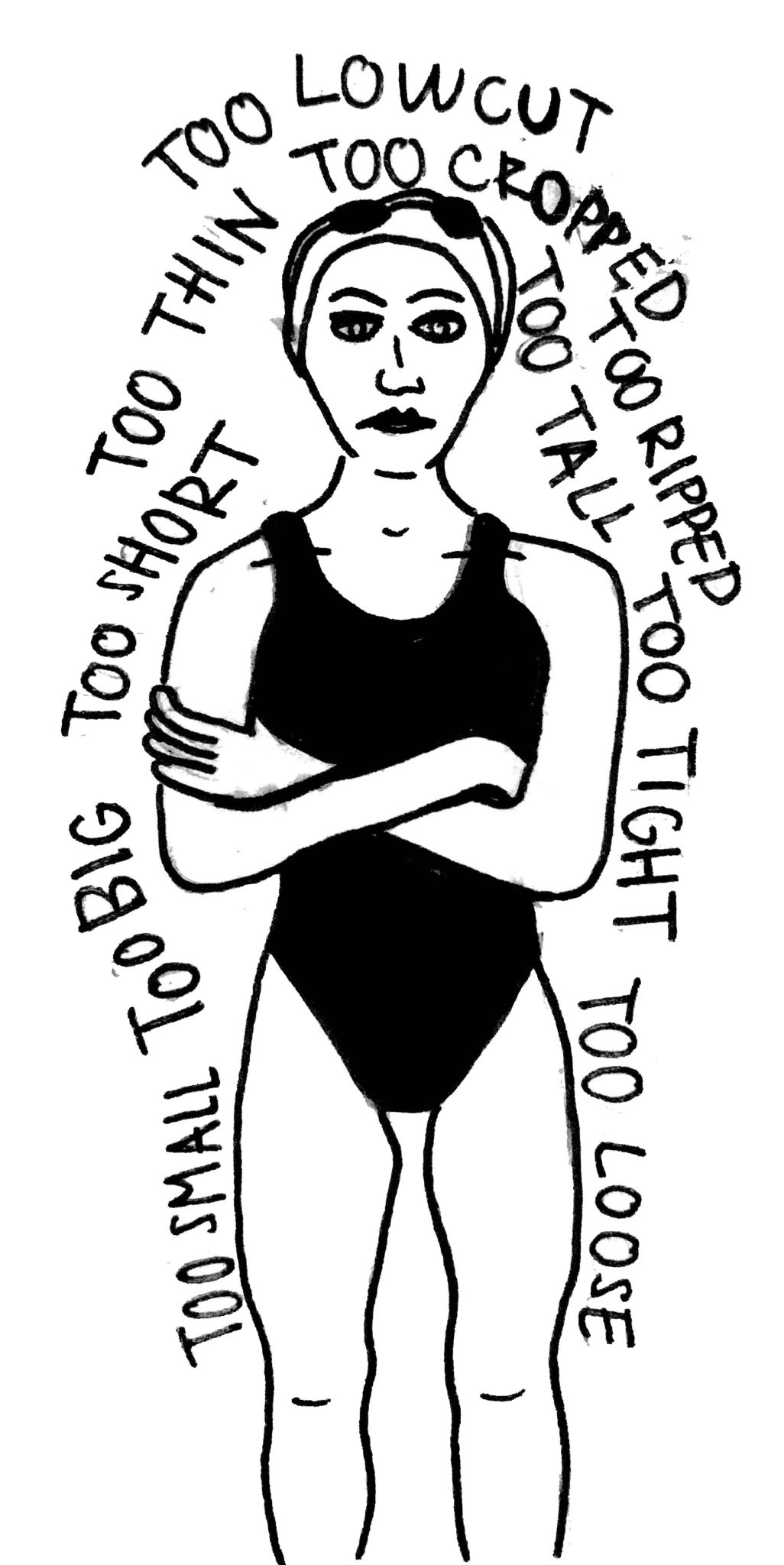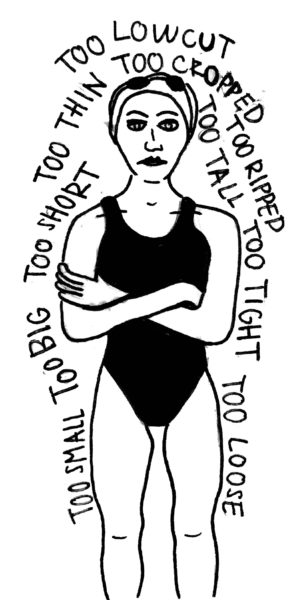

Ever since women have been allowed to participate in competitive sports, dress codes have been created that target female athletes. As a female athlete myself, I am familiar with this issue. In 2019, I came across an article about 17-year-old high school swimmer, Breckynn Willis, from Alaska. She had been disqualified from a swim meet because the official said that her body was “too exposed” in the school-issued swimsuit she had worn. As a fellow swimmer, I was disgusted. It was outrageous how a victory that Willis clearly worked so hard for was taken back because of the way her swimsuit fit.
While male athletes also need to follow dress codes, female athletes’ requirements are much more restrictive. Recently, the
women’s dress code debate has risen again due to backlash over officials inappropriately prosecuting female athletes for their clothing choices. Officials are quick to criticize female uniforms deemed too “promiscuous” or “inappropriate.”
“It was outrageous how a victory … was taken back because of the way her swimsuit fit”
Disqualifications and prosecutions of female dress that impact athletes like Willis have occurred for too long. In the early 20th century, Wimbledon tennis player Suzanne Lenglen wore a low-neck dress with a calf-length skirt and was called “indecent” by the press. Similarly, in 1955, American tennis star Billie Jean King was forbidden to take a group photo at a tennis club simply for wearing shorts instead of a short skirt.
This trend has continued into this century with high-level athletes receiving backlash from the public and sports officials for their uniforms.
In 2018, Serena Williams wore a catsuit, in part to prevent blood clots, at The French Open after returning to the sport after her pregnancy. In response, the President of the French Tennis Federation, Bernard Guidicelli, stated her outfit was not acceptable. In fact, the incident was followed by the announcement of a stricter dress code that banned catsuits to “respect
the game and place.” The outfit was primarily intended to ease health concerns for Williams. Guidicelli’s statements demonstrate the unnecessary policing of female athletes’ bodies, rather than allowing them to play in what’s comfortable and safe.
Similarly, this past July, Norwegian women’s handball players were fined 1,500 euros for wearing shorts instead of the typical bikini briefs. The women from the team wore the shorts in order to fight against the restrictive code for women’s brief requirements. While male handball players were able to wear any length of shorts, women’s briefs could be no longer than four inches.
This incident gained traction from female athletes and famous figures across the world, with American pop singer P!nk even offering to pay the fines. These incidents contribute to a larger trend of the hypersexualization and policing of women’s bodies and lack of consideration for athletes’ comfort.
“[Dress] codes are catered towards the male perspective and the sexualization of female bodies”
With new attention brought to the issue of women’s dress codes, modifications have been implemented. In mid-June, the Olympic Committee announced in a tweet that women would have the option to wear shorts over their leotards, instead of only being allowed to wear the traditional leotard.
Sports culture still has a long way to go. This is clearly only the beginning of women gaining more rights to what they are able to wear in competition.
Over-sexualization of women’s bodies in athletics ties into the larger problem of sexism. Beginning at a young age, women have been taught through dress codes and social norms to “cover up” and “be modest.” Starting in elementary school, school administrations strictly enforced dress codes, with rules like no midriffs and no shorts or skirts above a certain length. Almost all dress codes target females exclusively.
Like many other young girls, I didn’t understand why I was taught to dress conservatively, or why my mom would adjust my shirt and not allow me to wear short dresses. As I grew older, I discovered the reality: dress codes are catered towards the male perspective and the sexualization of female bodies.
The presence of dress codes and idea that women need to dress conservatively to be respected are still present in society, proving that we need to take more initiative to fight against these norms. Changing rules in women’s athletics is only the first step towards this goal.



